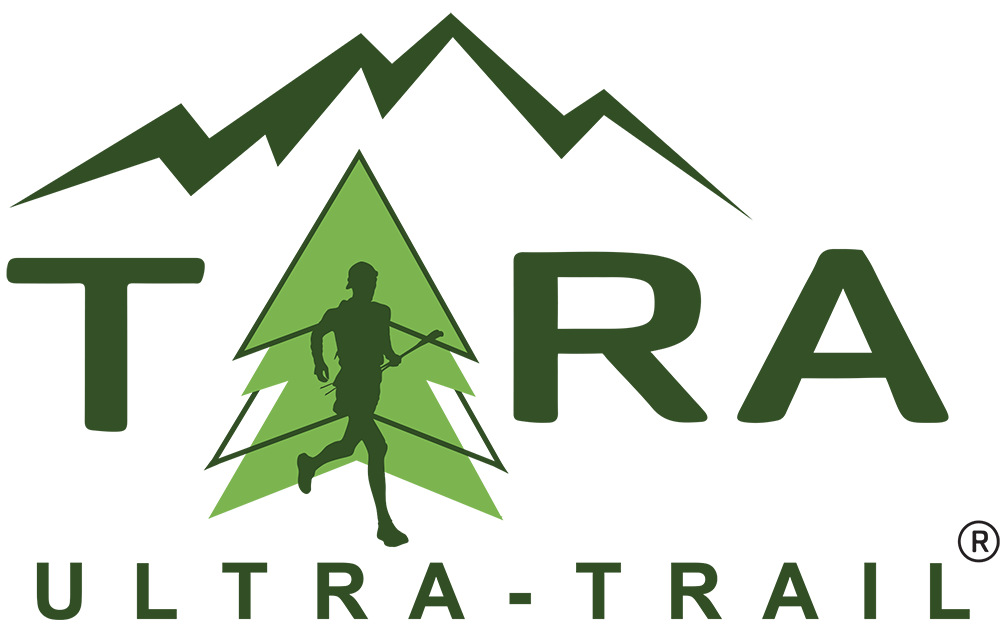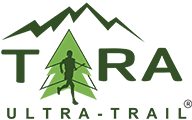RULES AND REGULATIONS
TARA ULTRA TRAIL
RULES AND REGULATIONS
It is essential to:
- be completely aware of the length and specificity of the event and to be perfectly prepared for it;
- know how to confront, without outside help, climatic conditions which could be very difficult to deal with (night, wind, cold, fog, rain or snow) ;
- know how to manage, physical or mental problems arising from a great fatigue, digestive problems, muscle or articular pains,
- be totally conscious that the organization’s role is not to help a runner manage these problems;
Supply a specific medical certificate (not older than 6 months)
- It must be posted before June 15th 2023. (the organization does only accept medical certificates sent by email or the post)
Runners younger than 18 years old on the date of the event, must supply parental authorization.
Runners younger than 18 years old cannot participate in TUT 62km race.
Runners younger than 14 years old on the date of the event, can only participate with parents.
Each competitor must sign the Declaration of liability at the competition center (bring your ID, please).
The organizer reserves the right to join or cancel the race in case of insufficient number of registered competitors (minimum 20 completed entries).
- Supply of water of 1 liter minimum (TUT 62 and TUT 28)
- Personal beaker/water container (mandatory for all routes)
- Mobile phone (smartphone strongly recommended): the runner must be reachable at any time before, during and after the race (load into its memory the organization’s security numbers, don’t mask your number and don’t forget to leave with the battery fully charged). An external battery is highly recommended (mandatory for all routes)
- Lamp in good working order with spare cells/batteries. ( TUT 62km). Recommendation: 200 lumens or more. No lamp is required for other races.
- Survival blanket ( TUT 62km).
- Whistle
- Jacket with hood which will withstand bad weather in the mountains and made with a waterproof and breathable ( TUT 62km).
- Food reserves ( TUT 62km).
Hot weather kit (Recommendation)
- Sunglasses
- Sun cream (Recommendation: minimum sun protection factor 50 (SPF)
- Supply of water of 2 liters minimum
Other recommended equipment
- Poles in the case of rain for your security on slippery ground
- Vaseline or anti-heat cream
- GPS watch
- Emergency sewing kit.
If you choose to take poles, it is for the duration of the race. It is forbidden to start without poles and recuperate them during the course of the race. No poles are authorized in the drop bags.
It is strictly forbidden to abandon your rubbish (gel tubes, paper, plastic wrappers…) along the race route. Trash/rubbish bins are available at each refreshment post and it is imperative that they are used.
All participants must keep any rubbish and wrappers with them until they can throw them in the bins which are provided for them at each refreshment post.
It is imperative that you follow the paths as they are way-marked, without short-cutting them. Actually, short-cutting a path causes erosion damaging the site.
The principal of an individual race in semi-autonomy is the rule. Semi-autonomy is defined as having the capacity to be autonomous between two refreshments posts.
Each runner must have with them throughout the duration of the race the totality of their obligatory equipment. They transport this equipment in a pack, tagged during race-bib distribution and which cannot be changed along the race route. At any moment of the race, the judges can verify the pack and its contents
The refreshment posts supply drinks and food to be consumed on site. The organization only supplies still water for filling water bottles or hydration packs. The runner should take care to ensure they have, when leaving each refreshment post, the quantity of drink and food which is necessary to keep them going until the following refreshment post.
A personal assistant is tolerated exclusively at certain refreshment posts, in the zone specifically reserved for this use and at the discretion of the chief of the post. This assistance can only be given by one person.
It is forbidden to accompany or be accompanied along any part the race route by a person not registered for the race, outside of the tolerance zones which are clearly marked in the proximity of the refreshment posts.
The race-bib must be worn on the chest or stomach and be permanently and completely visible throughout the totality of the race. It must always be placed on top of all clothing and can in no case be positioned on a leg or pack.
Each competitor receives a 30 liter bag with their race-bib. After having filled it with the necessities of their choice and having closed it they can drop it off at the Competition center. This bag is taken to transit station by the organization. Upon arriving in transit station the runner must, obligatorily, withdraw their bag. When they leave the life base they, personally, leave their bag in the allotted area. The bags are then returned to finish area Mitrovac.
Only bags supplied by the organization will be transported. Poles are not allowed in these bags. The contents of the bags will not be verified, no contestation over the contents of the bag at the finish will be accepted. The placing of valuable objects in these bags is not recommended.
The organization ensures the presence of solid and liquid refreshments along the race-route. The organization supplies water for filling water bottles/hydration packs and personal beakers are obligatory. The runner must take care, when leaving each refreshment post, that they have the necessary quantity of food and drink to last them to the next refreshment post.
A check is carried out at the arrival at a refreshment post and at certain security posts. Unexpected check points are set-up at posts other than those of refreshment or security posts. Their location is not divulged by the organization.
The route is marked with PVC strips on trees or flags pinned to the ground.
For better sighting at night, the way-markers are fitted, in part, with reflective material which attracts the light of your torch.
ATTENTION: if you don’t see any longer than 100-200 meters, turn back!
GSS and the mobile medical team will be on track throughout the race.
Every runner must give assistance to any person in danger and alert the security services.
Do not forget that hazards of all sorts, linked to the environment and the race, may require you to wait assistance for a longer time than expected. Your security therefore depends upon the quality of that which you have put in your pack.
Each runner must stay on the way-marked route, even to sleep.
The maximum time for the event, for the totality of the route is fixed at:
- TUT 62 km – 16 hours
- TUT 28 km – 7 hours
- TUT 12 km – 3 hours
Time barriers will also be placed along the route. These time barriers are calculated to allow participants to arrive at the finish within the maximum time allowed, while having made eventual stops (rest, food…). In order to be authorized to continue with an event, competitors must leave the check point before the fixed time (whatever their time of arrival at the check point).
Except in the case of injury, a runner must not abandon outside of a check point. They must inform the person responsible for the post. In the case of the decision to abandon between two check points, the runner must go to the nearest check point where they announce their abandonment.
In the case of an injury, the competitor should notify the security team by phone or ask the competitor passing by him to notify the chief of the next post.
- Short-cutting the route at the race
- Absence of obligatory equipment
- Refusal to have obligatory equipment checked
- Phone turned off
- Lack of respect for others (organization or runners)
- Not assisting a person in difficulty (in need of care)
- Assistance by persons which are not competitors
- Being accompanied along the route outside the clearly defined zones
- Cheating (eg: use of a means of transport, sharing a race-bib, …)
- Lack of visible race-bib
- Absence of passage through a control point
- Departure from a check point after the time barrier
#FEELTHEMOUNTAIN

